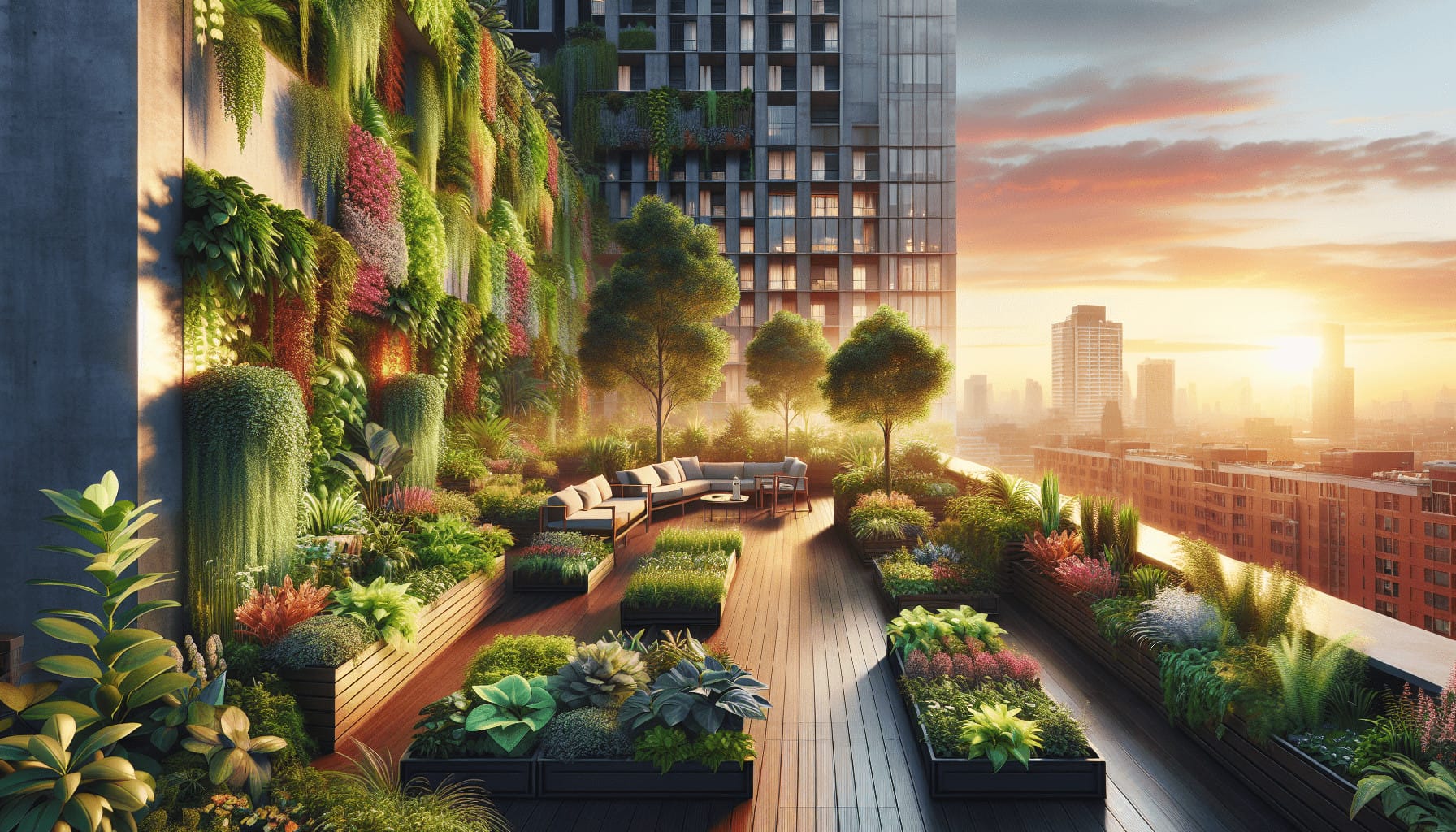Have you ever thought about transforming your rooftop into a lush, green paradise? A rooftop garden can be a wonderful addition to your home or building, offering both aesthetic and environmental benefits. However, choosing the perfect spot for your rooftop garden can be a little tricky. To make things easier for you, let’s go through some of the most important factors to consider when selecting the best location for your rooftop garden.
Understanding the Importance of Location
The success of your rooftop garden largely hinges on its location. A well-chosen spot can provide optimal sunlight, shelter from harsh winds, and a serene escape to enjoy your plants. Additionally, correctly assessing your rooftop’s structural integrity and environmental conditions ensures that your garden will flourish and remain safe over time.
Why the Right Location Matters
Choosing the right location isn’t just about convenience; it’s central to the garden’s health and longevity. Proper site selection aids in minimizing maintenance, optimizing plant growth, and ensuring that your garden is both sustainable and pleasurable.
Evaluating Sunlight Exposure
The amount of sunlight your rooftop receives will directly influence what plants you can grow. Different plants have varying light requirements, and understanding these can make a huge difference in your gardening success.
Assessing Sunlight Patterns
Before planting, observe how sunlight moves across your rooftop throughout the day. Is one side shaded for most of the day while another is bathed in sunlight? Devising a plan based on your observations can help you cater to the light requirements of various plants.
Sunlight and Plant Selection
With a clear understanding of your rooftop’s sunlight patterns, you can select appropriate plants. Sun-loving plants like tomatoes or lavender do best in full sun, whereas shade-tolerant plants such as ferns or hostas thrive with less light.

Analyzing Wind Exposure
Rooftops are often exposed to strong winds that can easily damage your plants. It’s crucial to assess the wind conditions on your rooftop to implement effective countermeasures.
Wind Shields and Barriers
Erecting windbreaks or barriers can help shield your plants. Use taller plants, trellises, or even structural elements like walls or fences to redirect wind flow or reduce its intensity.
Choosing Wind-Resistant Plants
Select resilient plants known for their ability to withstand windy conditions. Hardy herbs and deep-rooted perennials often perform well on exposed rooftops.
Considering Weight and Load Capacity
Your rooftop garden’s safety hinges on your understanding of its weight limit. This consideration will affect everything from plant selection to the kind of containers you use.
Understanding Load Limitations
Consult with a structural engineer to ascertain your rooftop’s load-bearing capacity. This assessment informs whether it’s safe to introduce elements like planters, soil, and water features.
Lightweight Gardening Solutions
Using lightweight growing mediums and containers can substantially reduce the burden on your rooftop. Consider innovations such as hydroponic systems or lightweight composite materials for planters.

Evaluating Accessibility and Maintenance
For any gardening project to be successful, it must be accessible and manageable. Ensuring that you have easy access to your garden makes both routine care and emergency intervention easier.
Paths and Accessibility
Make sure there’s a straightforward and safe route to your garden. This pathway facilitates your gardening activities, especially those requiring tools or the transfer of soil and plants.
Ease of Maintenance
Plan for straightforward maintenance. For instance, installing self-watering planters or setting up a simple irrigation system can greatly reduce the workload involved in keeping your garden thriving.
Considering Water Access and Drainage
Water provision and removal are critical in rooftop gardens. Identifying how to efficiently water your plants, while avoiding issues like waterlogging, can be decisive in your garden’s success.
Water Source Proximity
Ensure that a water source is within convenient reach of your garden. Installing a hose system or drip irrigation can simplify the watering process significantly.
Effective Drainage Solutions
Implement adequate drainage to protect your garden from water damage. Consult with professionals to ensure your setup efficiently channels excess water away from both the plants and the building structure.
Exploring Aesthetic and Functional Design
Your garden can be both a visual delight and a functional space. Thoughtful design planning can create a beautiful, inviting area while accommodating your specific lifestyle needs.
Visual Appeal
Consider the visual impact of your garden. Integrate features like seating areas, decorative elements, or lighting to elevate the space beyond simple greenery.
Multifunctional Spaces
Maximize your garden’s utility by incorporating areas for relaxation, social gatherings, or even small-scale food production. This approach creates a versatile space tailored to your unique preferences.
Environmental and Legal Considerations
Addressing environmental concerns and gaining necessary permissions is paramount. These steps ensure that your garden complies with local regulations and contributes positively to the local environment.
Local Climate and Legal Regulations
Research your region’s climate to select appropriate plants and understand legal requirements you must adhere to. Some areas may have rules about rooftop installations, including weight restrictions or material guidelines.
Eco-Friendly Gardening Practices
Commit to eco-friendly practices by utilizing native plants, conserving resources like water, and avoiding harmful chemicals. Sustainable gardening not only benefits the environment but also often reduces costs and maintenance.
Conclusion
Planning and executing a rooftop garden requires careful attention to multiple factors, from structural considerations to aesthetic desires. By considering sunlight, wind, accessibility, and other critical aspects, you create a thriving space that’s as practical as it is beautiful. Remember, each rooftop is unique, and paying attention to these details will lead to a successful, delightful garden that you can enjoy year after year.
With these considerations in mind, you’re well on your way to crafting the perfect rooftop garden. Your space will become a lush retreat, reflecting your personal style while contributing positively to the environment. May your rooftop garden dreams blossom into a vibrant reality!
